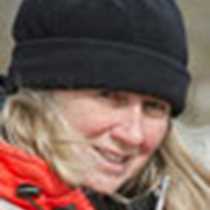We sat in the shade of the orchard on picnic benches or soft moist grass. Cherries, red and mirror polished pendants, hung above our heads contrasting brightly with the deep green of their leaves. Fig, plum, apricot and walnut trees showed promise of a bounty yet to come, in the fall perhaps. Civilization was still with us but little by little the wild edged in. A plethora of bird species passed through nearby branches, pausing only long enough for us to read their telltale markings and put a name on each; Eastern and Western Kingbird, Bullock's Oriole, Cedar Waxwing, American Goldfinch and more. The day was hot. Lush vegetation rimmed a tiny pond. Through the dark cool foliage a form appeared. It's movements were tentative at first. A mule deer lifted her delicate hooves and stepped into the pool. Our presence was noted and acknowledged solely by a flick of her huge ears and the constant vigilance of her soft brown eyes. She remained and fed, joined by another of her kind. They tolerated our nearness and reminded us of the pleasures derived from observing a remnant of wildness.
We left civilization behind in the afternoon. In our jet boat cocoon we were transported into the grandeur of places touched by man but now protected for the enjoyment of future generations. Hell's Canyon will have no development now. It will remain a place where one's vision is drawn skyward by towering cliffs, where majestic ponderosa pines define high sloping ridges and where jumbled boulders turn rushing waters to foam. Ancient art tells the tale of plenty, of bighorn sheep and deer. This same wildlife was here today. Bighorn ewes led tiny lambs down precipitous cliffs towards the water's edge. Deer ambled in the shallows or browsed nearby. Although a wilderness no more, the canyon touched us with its closeness to the wild.




